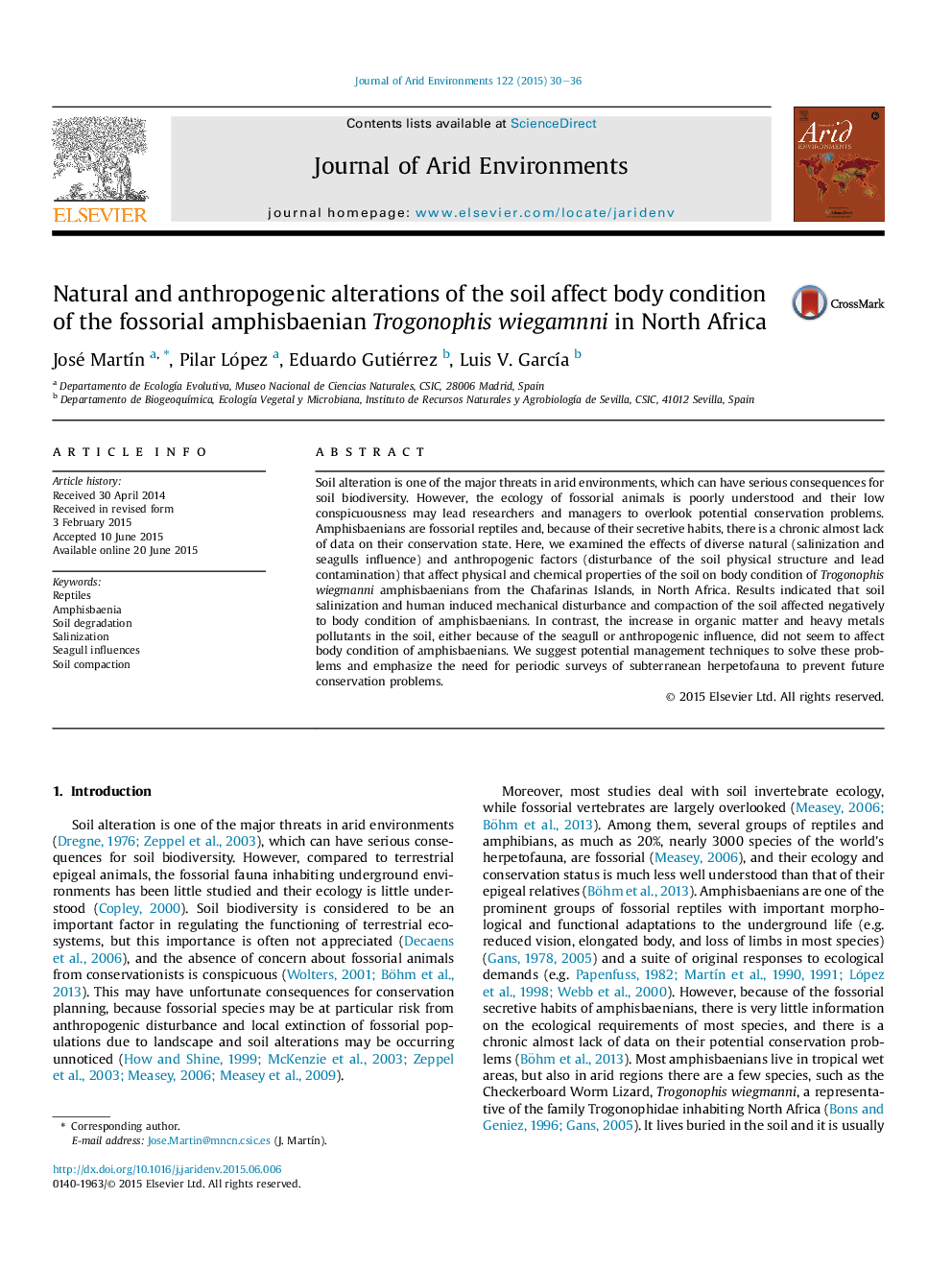| Article ID | Journal | Published Year | Pages | File Type |
|---|---|---|---|---|
| 6303269 | Journal of Arid Environments | 2015 | 7 Pages |
Abstract
Soil alteration is one of the major threats in arid environments, which can have serious consequences for soil biodiversity. However, the ecology of fossorial animals is poorly understood and their low conspicuousness may lead researchers and managers to overlook potential conservation problems. Amphisbaenians are fossorial reptiles and, because of their secretive habits, there is a chronic almost lack of data on their conservation state. Here, we examined the effects of diverse natural (salinization and seagulls influence) and anthropogenic factors (disturbance of the soil physical structure and lead contamination) that affect physical and chemical properties of the soil on body condition of Trogonophis wiegmanni amphisbaenians from the Chafarinas Islands, in North Africa. Results indicated that soil salinization and human induced mechanical disturbance and compaction of the soil affected negatively to body condition of amphisbaenians. In contrast, the increase in organic matter and heavy metals pollutants in the soil, either because of the seagull or anthropogenic influence, did not seem to affect body condition of amphisbaenians. We suggest potential management techniques to solve these problems and emphasize the need for periodic surveys of subterranean herpetofauna to prevent future conservation problems.
Related Topics
Physical Sciences and Engineering
Earth and Planetary Sciences
Earth-Surface Processes
Authors
José MartÃn, Pilar López, Eduardo Gutiérrez, Luis V. GarcÃa,
